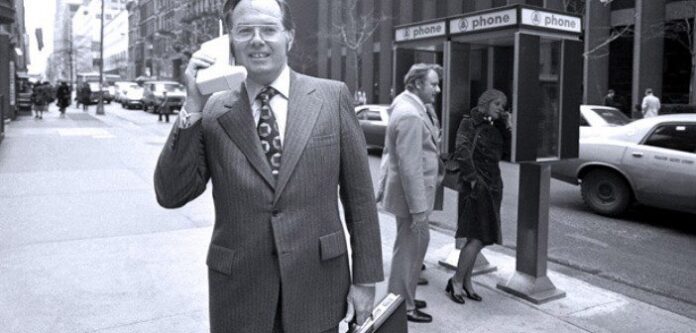Editor’s Note: RCR Wireless News goes all in for “Throwback Thursdays,” tapping into our archives to resuscitate the top headlines from the past. Fire up the time machine, put on those sepia-tinted shades, set the date for #TBT and enjoy the memories!
US wireless subscribers hit 118.4 million, says CTIA
WASHINGTON, D.C.—Use of wireless devices is skyrocketing, according to the Cellular Telecommunications & Internet Association’s recently released mid-year 2001 data survey results. According to the survey, total billable minutes of use hit almost 200 billion, up 77 percent from June of 2000. In addition, overall wireless subscribership reached 118.4 million, an increase of 22 percent from June of 2000. Meanwhile, digital subscribers totaled 85.2 million, 32 million (or 61 percent) more than last June. The survey also showed that service revenues rose almost 26 percent, to $30.9 billion, from June of 2000’s $24.6 billion. And, despite economic uncertainties of late, wireless carriers reported $99.7 billion in total cumulative capital investment, a 30 percent increase from June 2000. CTIA’s survey gathered information on topics including cumulative capital investments, total service revenues, roaming revenues, average local monthly bills and average lengths of calls, from wireless service providers.
5 GHz Wi-Fi rumors circulate
While 802.11b, otherwise known as Wi-Fi, has made huge inroads as the wireless local area network technology of choice, many companies providing equipment and support for the technology acknowledge higher-speed alternatives will eventually displace Wi-Fi as the WLAN standard. Those alternatives include 802.11a, which operates in the 5 GHz frequency band, and the European flavor HiperLan2. Both technologies provide data throughput of more than 54 megabits per second, compared with Wi-Fi’s current 11 Mbps, and operate in a cleaner frequency band compared with Wi-Fi’s 2.4 GHz band. Hoping to make the transition between the incompatible standards, Sweden-based Spirea AB unveiled its TripleTraC solution, integrating .11a, .11b and HiperLan2 on a single chip. The company said that in addition to providing a lower-cost solution to vendors, the solution will allow companies to migrate to the different technologies as the standards develop. “TripleTraC enables our customers to smoothly and inexpensively migrate their products to next-generation wireless networks,” said Anders Oldeback, vice president of sales and marketing for Spirea. “Our achievement of the lowest cost, smallest form factor and highest power efficient radio flexible chip means that [original equipment manufacturers] can enable wireless networking using almost any of today’s standards and those emerging tomorrow.” … Read more
Industry players move to open up mobile software, services
LAS VEGAS—A major group of carriers, vendors and manufacturers announced an initiative to create a global and open mobile software and services market. The group said the move would allow the wireless industry to offer consumers a wide selection of competitive products that would be interoperable. AT&T Wireless, Cingular Wireless MM02, NTT DoCoMo, Vodafone, Fujitsu, Motorola, NEC, Nokia, Siemens, Sony and Symbian were among the companies in the initiative.
DoCoMo and Nokia partner on open mobile architectures
TOKYO-NTT DoCoMo Inc. and Nokia Corp. launched a joint action plan to accelerate the development of the open mobile architecture initiative announced by wireless companies earlier this week. The two companies will cooperate in promoting open mobile architecture for W-CDMA-based third-generation services in areas such as browsing, messaging and application execution. “In order to accelerate the introduction of mobile Internet access, mobile visual communications and other services for 3G networks, NTT DoCoMo is eager to cooperate with other key players in the mobile communications industry to elaborate specific technical specifications based on a standardized mobile architecture,” said NTT DoCoMo President Keiji Tachikawa.
China to establish the China Telecommunications Satellite Group
BEIJING—By the end of the year, China will set up a new telecom carrier, the China Telecommunications Satellite Group Corporation, by merging the satellite subsidiaries of several existing companies, including China Telecommunications Broadcast Satellite Corporation and ChinaSat. Zhou Zehe, who is currently heading ChinaSat, has been appointed general manager. In China, satellites are still underused for transmitting telecom signals. The company will also offer Internet access and Internet Protocol (IP) telephony. Hughes, one of the world’s biggest satellite service providers, opened a China subsidiary in mid-October.
Check out the RCR Wireless News Archives for more stories from the past.

